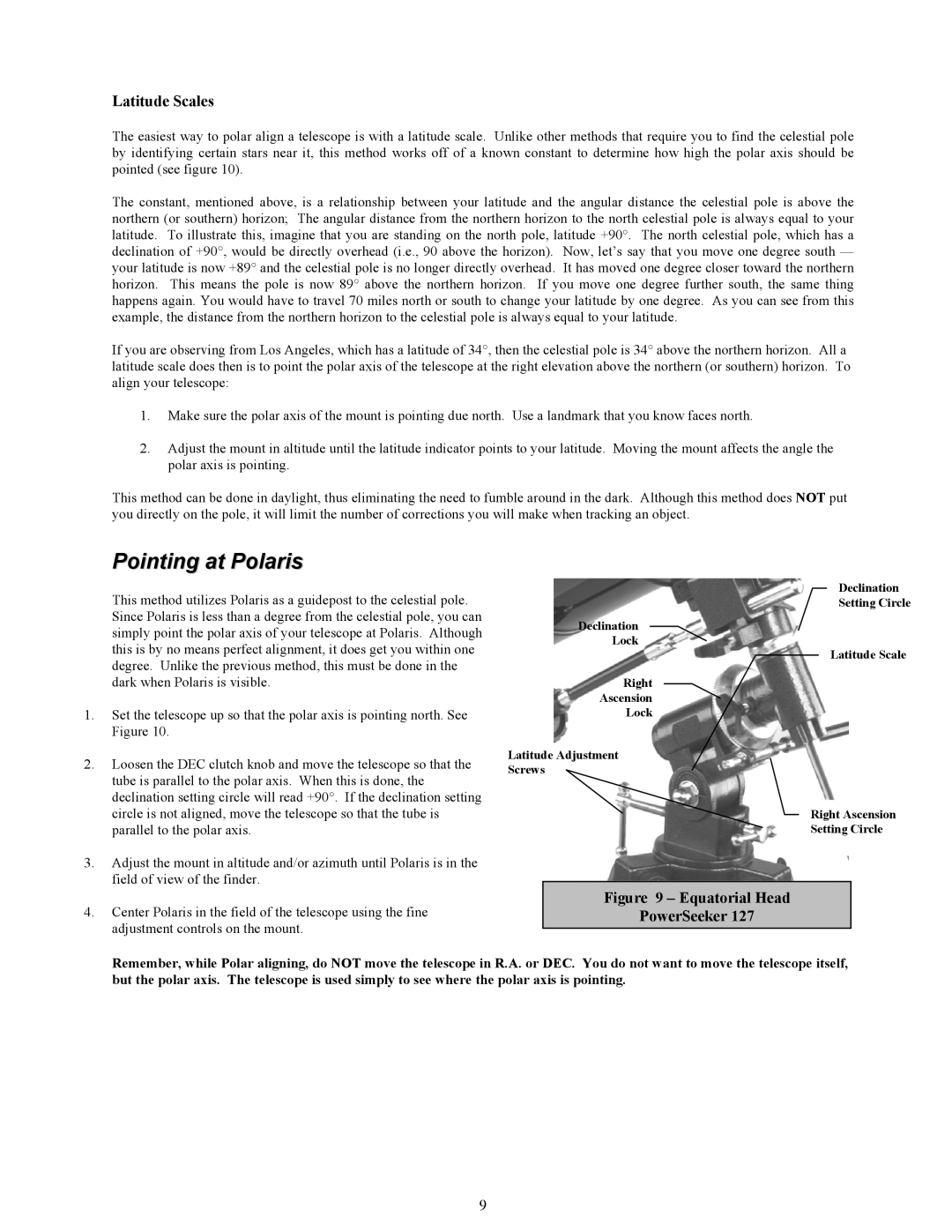127 specifications
The Celestron 127 is a highly regarded telescope within the Celestron family, known for its combination of portability, reliability, and versatility. This telescope is specifically designed to cater to both novice astronomers and seasoned observers, making it a popular choice for those looking to explore the night sky.One of the standout features of the Celestron 127 is its 127mm aperture. This size is optimal for gathering light and allows users to observe celestial objects in great detail, from the craters of the Moon to distant galaxies. The telescope employs a Maksutov-Cassegrain design, which strategically combines mirrors and lenses to create a compact and efficient optical system. This design minimizes chromatic aberration while providing impressive image quality, ensuring that celestial objects appear sharp and clear.
The Celestron 127 offers a focal length of 1500mm, resulting in a focal ratio of f/11.8. This relatively long focal length is advantageous for high-power observations, making it possible to view planets in stunning detail. For instance, users can clearly see Saturn's rings or the surface features of Mars with the right eyepieces.
Portability is another major aspect of the Celestron 127. Weighing in at approximately 11 lbs, it is lightweight enough to be transported easily to dark sky locations, yet sturdy enough for regular use. The telescope comes mounted on a stable, easily adjustable mount that allows for smooth tracking of celestial objects as they move across the night sky.
Celestron integrates advanced technologies into the 127 model to enhance user experience. The telescope is compatible with various Celestron accessories, including computerized mounts for automatic tracking and GoTo functionality. This feature is especially user-friendly for beginners, who may struggle with manually locating objects.
The Celestron 127 is not only limited to astronomical observations; it can also be used for terrestrial viewing. The additional versatility allows users to take advantage of the telescope's optical capabilities during the day.
In summary, the Celestron 127 stands out as a well-rounded telescope that marries portability with advanced optical technology. With its generous aperture, Maksutov-Cassegrain design, and user-friendly features, it is an excellent choice for anyone eager to discover the wonders of the universe, whether it's their first telescope or an addition to a growing collection.

